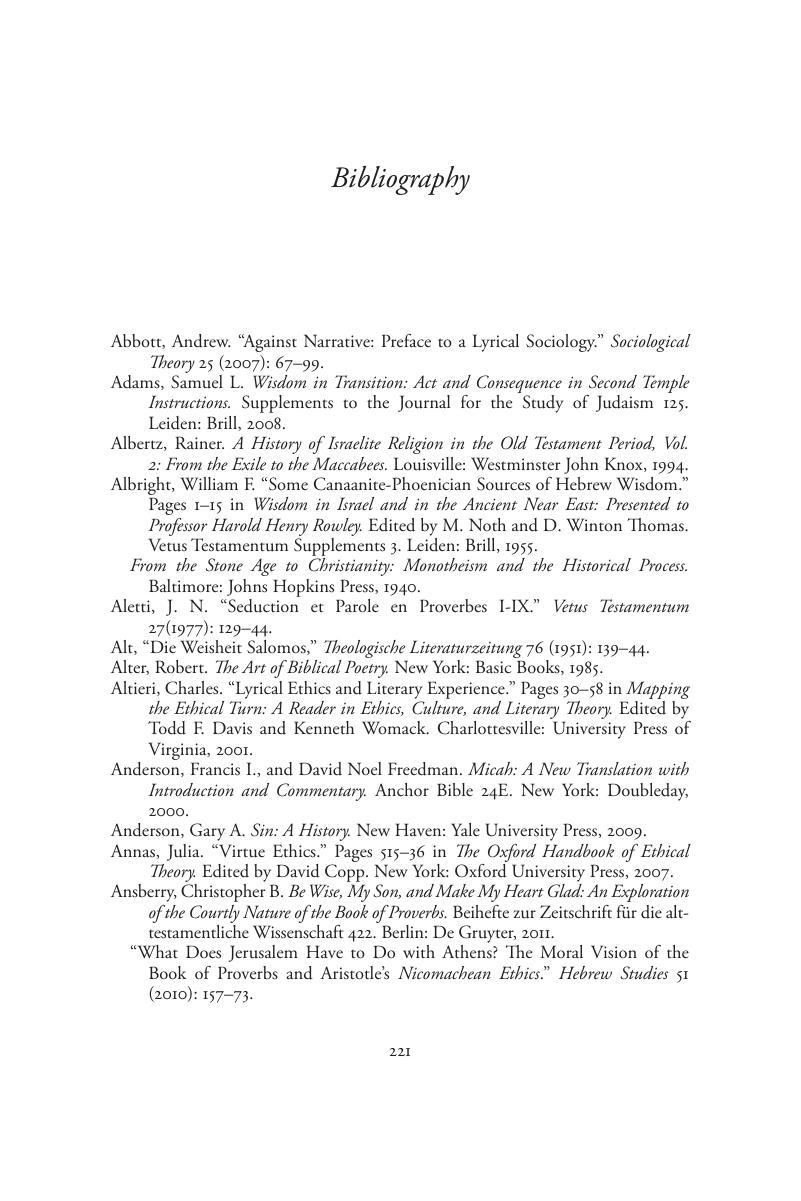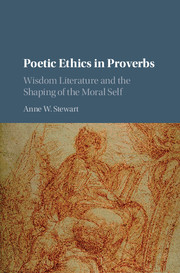Book contents
Bibliography
Published online by Cambridge University Press: 05 December 2015
Summary

- Type
- Chapter
- Information
- Poetic Ethics in ProverbsWisdom Literature and the Shaping of the Moral Self, pp. 221 - 238Publisher: Cambridge University PressPrint publication year: 2015



